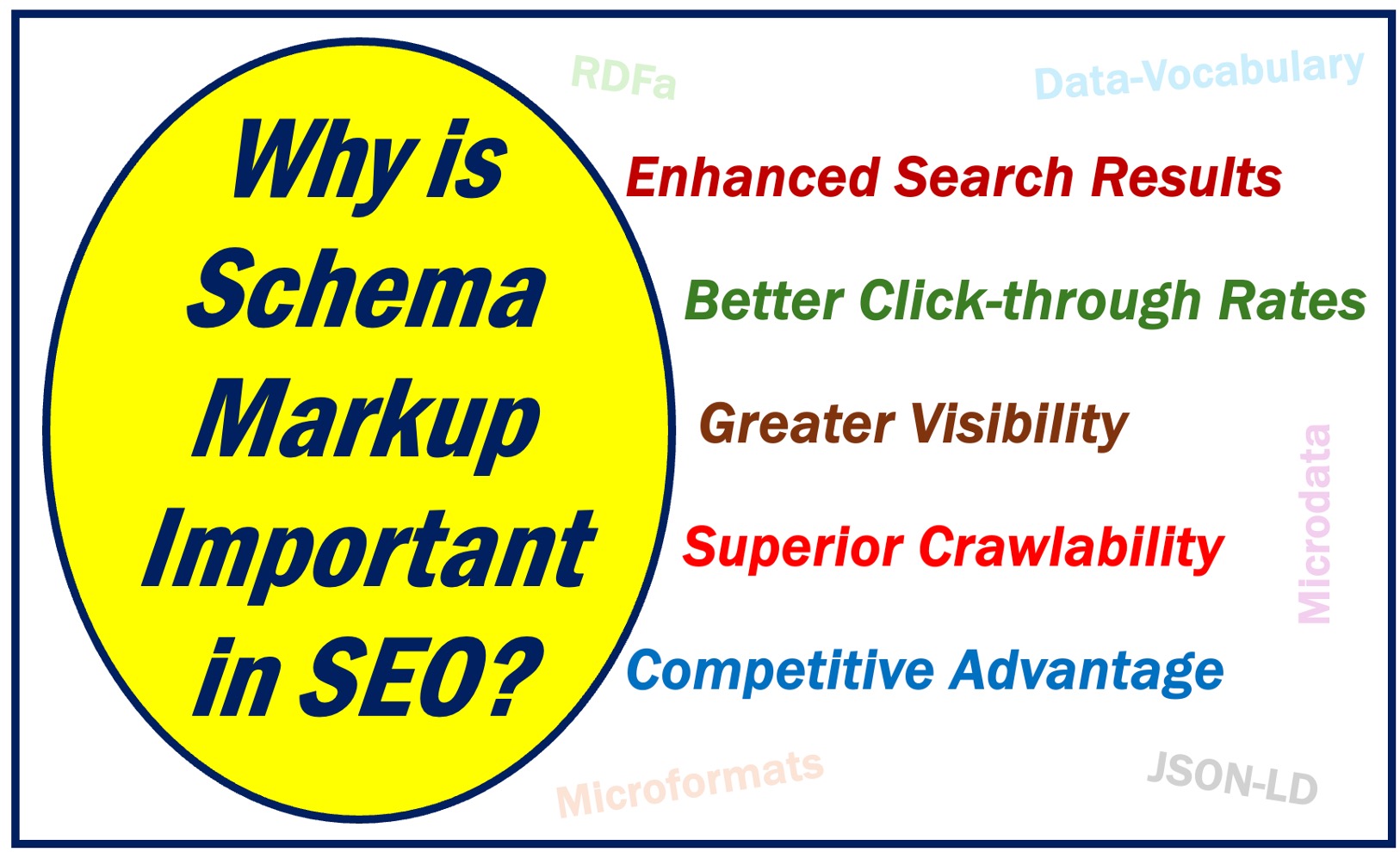Schema Markup is a very powerful tool in the world of SEO. It’s crucial to how search engines interpret and display website content. A schema markup, often referred to as structured data, is a type of microdata added to a webpage to create an enhanced description (also called a rich snippet). It shows up in search results. It was collaboratively developed by Yandex, Yahoo!, Bing, and Google to help search engines comprehend the context of content on websites.
Put simply, Schema markup is a code (semantic vocabulary) added to a website to help search engines return more informative results for users.
Semrush.com says the following about the term “Schema Markup”:
“Schema markup, sometimes referred to as structured data, is code you add to your webpages to help search engines better understand your content.”
Importance
A schema markup is very important when it comes to SEO for many reasons:
- Improved CTR
Rich snippets make webpages more prominent in search results, leading to higher click-through rates (CTRs).
- Voice Search Optimization
By enhancing content comprehension and retrieval for voice search technologies, Schema markup significantly improves visibility in voice search results.
- Enhancing Content Contextualization
It provides search engines with explicit cues regarding content meaning, ensuring more relevant and accurately indexed search results.

Types
There are many types of schema markups, for example:
- Local Business
Information about local businesses, such as address, phone number, and business hours.
- Articles
Information about the headline, author, and publishing date for news and blog items.
- Events
Details of events, such as times, dates, and locations.
- Products
Information about products, such as price, availability, and review ratings.
There are many more types, including Person, Organization, Recipe, Review, Movie, Book, Course, FAQPage, JobPosting, SoftwareApplication, and VideoObject, each offering specific details to enhance content understanding and search visibility.
Methods of Implementation
To effectively apply Schema markup to a website, various implementation methods can be utilized, each with its unique advantages and suitability for different types of content. These include:
- JSON-LD
A JavaScript-based method favored for its adaptability and ease of use, enabling seamless integration without altering HTML structure.
- Microdata
A method based on HTML that incorporates markup directly into previously-written information.
- RDFa
An HTML5 extension that enriches web pages with rich metadata, supporting the web of linked data through detailed context.
Best Practices
To maximize the benefits of Schema markup for SEO and user experience, it is essential to adhere to the following best practices:
- Accuracy and Relevance
Make sure that the structured data accurately represents the content on the page.
- Testing Tools
Use tools like Google’s Structured Data Testing Tool to validate and preview schema markup.
- Ongoing Maintenance
Remember to regularly update and maintain the markup to make sure it’s accurate and effective.
Challenges and Considerations
Implementing schema markup comes with its set of challenges and considerations, crucial for anyone looking to enhance their website’s visibility and functionality:
- Complexity in implementation
Proper implementation can be technically challenging, because it requires a certain level of coding knowledge.
- Avoid Spammy Techniques
Don’t use schema markup for manipulative purposes, since it can lead to penalties from search engines.
Written by Nicolas Perez Diaz
